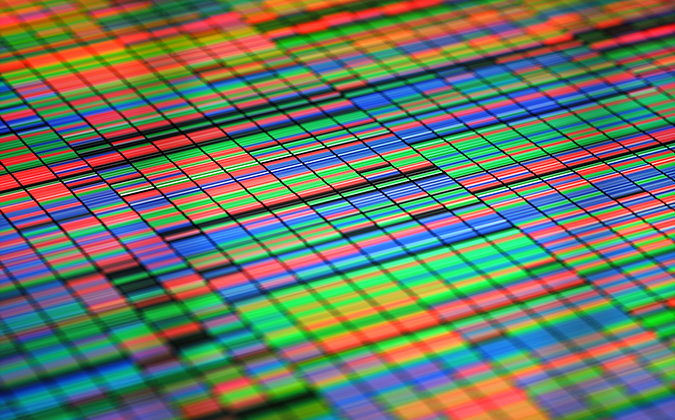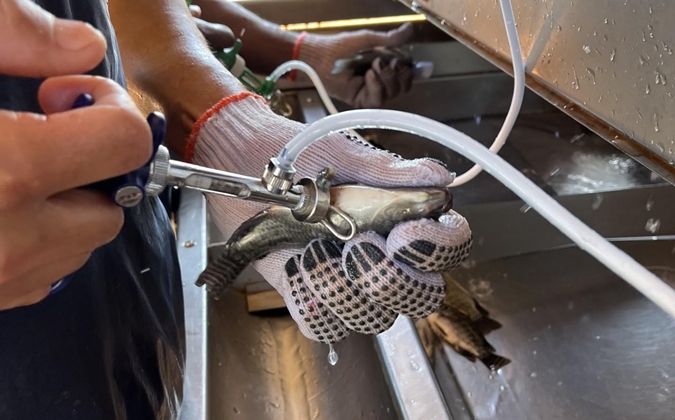
Fish Farm Forum is pleased to host this editorial page on behalf of Pharmaq.
Pharmaq
Study tracks salmonid alphavirus transmission in Norwegian aquaculture
New genomic analysis of salmonid alphavirus subtype 2 (SAV2) samples from Norway has shed new light on how the pathogen has spread through the country since its introduction in 2010.
Salmonid alphavirus (SAV) causes pancreas disease (PD) in Atlantic salmon and sleeping disease in rainbow trout, and its most severe outbreaks can result in high mortality. It is a persistent pathogen in Norwegian salmon aquaculture, having been observed at 158 different sites in the country during routine surveillance in 2020.1
Originally, PD cases in Norwegian aquaculture were found to be caused by SAV subtype 3 (SAV3), but this changed in 2010 with the arrival of SAV2.2
Tracking pathogen ‘progress’
Surveillance efforts help ensure pathogens remain understood by the aquaculture industry as they move and evolve in the environment, and can be useful to both farmers and regulators.
For the latest work, samples collected from sites across Norway by PHARMAQ were analyzed by researchers at the Roslin Institute in Edinburgh using nanopore DNA sequencing, an approach that allows rapid analysis of long DNA or RNA fragments. Sixty-eight field isolates were sequenced in total, from 27 sampling sites over 10 major production regions.
By sequencing the complete viral-genome code, the team found that SAV2 split into two further groups — SAV2a and 2b, around 2013 — and that farms in the counties of Trøndelag and Møre og Romsdal are likely a repeated source of transmission to parts of the country which have now been established as control zones, where the aim is to eradicate the virus.
In the case of transmission of SAV2a to Rogaland, in the southwest of Norway, the huge distance from originally affected sites, against the prevailing sea current, suggests that horizontal transfer via human activities, such as the use of well-boats to transport fish, was the cause, the researchers explained in an article in the journal Viruses.
“The overall picture is that farmed fish is the driving reservoir for the SAV2 and SAV3 epidemics in Norway and that anthropogenic processes play a significant role in the introduction of virus to new areas. This central role of human activity in spread is perhaps not surprising, but it may be more important, even within smaller geographical regions, than previously understood,” said Marius Karlsen, senior technical manager for PHARMAQ, who was involved in the research.
“We also see patterns that suggest virus to be repeatedly re-seeded to some areas, where smaller local epidemics burn for some years. We can’t pinpoint the exact mechanisms behind this spread, but any transport of biological material or equipment previously used within or close to a disease outbreak must be regarded as a potential risk.”
Genomic techniques provide essential details
Research in this area is aided by viral whole-genome sequencing becoming a reliable and cost-effective scientific approach, the authors said, with the study revealing co-infection of single fish with SAV2a and SAV3 viruses — an observation made possible by the genomic technologies used.
Though it is currently unknown if co-infections impact disease severity or vaccine effectiveness, the researchers recommended further work be directed in this area. Furthermore, considering the welfare and economic costs of viral diseases and the relative simplicity and affordability of new technologies such as nanopore sequencing, genomic surveillance programs for viruses of interest could quickly become a new standard to limit potential disease outbreaks, they suggested.
“Effectively we can use whole virus-genome sequencing for tracking, to a very fine resolution, how viruses are moving in aquaculture,” said Professor Dan Macqueen, based at the Roslin Institute, who led the study.
“That’s quite different to what we have currently. In Norway, the surveillance that happens is effectively a PCR (polymerase chain reaction) test for one chunk of the genetic code. This is useful to identify which viral type is on a site at one point in time, but what it doesn’t tell you is where the virus came from and when.
“The where and when is the information you need to inform a change in practice, and combining viral-genome sequencing with appropriate sampling produces such knowledge quickly. By sequencing the whole viral genome, we can also identify evolutionary changes in the virus sequence that accompany changes in disease outcome, akin to variants of concern for COVID-19.”
Vaccination is widely used against PD in salmon production, and while existing vaccines provide good cross-protection against the dominating subtypes in aquaculture, Karlsen said, some minor variations in cross-protection may occur.
“While we haven’t seen any signs of escape variants emerging from the current within-subtype diversity, the possibility to monitor genome changes in dominating SAVs will be a very powerful tool to detect such cases,” he added.
You can read the full journal article, published in Viruses.
1 Sommerset I, Bang Jensen B, Bornø B, Haukaas A, Brun E. (Eds.) The Health Situation in Norwegian Aquaculture 2020; Norwegian Veterinary Institute: Oslo, Norway, 2021.
2 Jansen MD, Jensen BB, Brun E. Clinical manifestations of pancreas disease outbreaks in Norwegian marine salmon farming–variations due to salmonid alphavirus subtype. J Fish Dis. 2015;38(4):343-53.
Posted on: August 23, 2022







